In today’s educational landscape, schools are more than just places for academic learning. They are environments where students develop life skills, navigate social relationships, and overcome personal challenges. For students facing physical, sensory, or cognitive barriers, school-based occupational therapy offers vital support. By integrating occupational therapy services into the school setting, educators and therapists help students build the skills they need to succeed academically and socially.
In this blog, we explore the top benefits of school-based occupational therapy and highlight how OT providers for K-12 schools can make a significant difference in students’ lives.
What is School-Based Occupational Therapy?
School-based occupational therapy focuses on helping students overcome challenges that affect their ability to perform tasks and participate in everyday school activities. Occupational therapists (OTs) work directly with students, teachers, and families to create individualized strategies that address specific needs.
Some areas addressed by school-based occupational therapy include:
- Fine Motor Skills: Improving handwriting, cutting, and other precise hand movements.
- Sensory Integration: Helping students process and respond to sensory stimuli effectively.
- Self-Regulation: Teaching strategies for managing emotions, focus, and behavior.
- Life Skills: Developing skills like dressing, eating, and using tools independently.
Why School-Based Occupational Therapy is Essential
Occupational therapy in schools is not just a support system for students with disabilities—it’s a critical service for fostering a more inclusive and equitable learning environment. Here’s why it’s essential:
- Supports Academic Success
By addressing underlying challenges, OTs help students perform better in academics. For example, improving handwriting and motor coordination enables students to complete written assignments effectively. - Enhances Social Participation
Many students struggle with social cues and interactions. Occupational therapy equips them with skills to navigate friendships, group work, and playground interactions. - Promotes Independence
OTs teach students strategies to perform tasks on their own, fostering confidence and self-reliance. - Encourages Inclusion
Therapy programs help create an environment where all students, regardless of their abilities, can fully participate in school activities.
Top Benefits of School-Based Occupational Therapy
Here are some of the most impactful benefits of school-based occupational therapy for students and schools:
1. Improved Fine and Gross Motor Skills
Many students face challenges with motor skills, making it difficult to complete tasks like writing, using scissors, or participating in physical activities. Occupational therapists provide targeted interventions to strengthen these skills, ensuring students can engage in both academic and extracurricular activities.
2. Better Sensory Processing
Some students are hypersensitive or under-sensitive to sensory input, which can affect their behavior and focus in class. Occupational therapy helps students regulate their sensory systems, enabling them to concentrate, follow instructions, and engage in learning.
3. Enhanced Self-Regulation
Managing emotions and behavior is critical for success in a classroom setting. Occupational therapists teach students coping mechanisms and strategies, such as deep breathing exercises or scheduled sensory breaks, to help them remain calm and focused.
4. Increased Classroom Participation
Students who struggle with motor or sensory challenges often feel excluded or hesitant to participate. Occupational therapy equips them with the skills and tools needed to confidently engage in classroom discussions, group projects, and hands-on activities.
5. Customized Support for Individual Needs
Occupational therapy is not a one-size-fits-all approach. Each student receives tailored strategies and interventions designed to address their specific needs. Whether it’s using assistive technology or modifying classroom tools, OTs ensure students can access and excel in their education.
6. Preparation for Life Beyond School
The skills learned in occupational therapy extend beyond the classroom. By focusing on life skills, such as organization, time management, and self-care, OTs prepare students for success in higher education, the workplace, and daily life.
The Role of OT Providers for K-12 Schools
Bringing skilled occupational therapists into schools is a collaborative effort that requires expertise and dedication. OT providers for K-12 schools play a crucial role in this process by:
- Recruiting Qualified Therapists: Connecting schools with certified professionals who have experience working with children and adolescents.
- Customizing Therapy Programs: Developing programs tailored to the school’s unique student population and goals.
- Providing Ongoing Support: Ensuring that therapists have access to resources, training, and tools needed to deliver effective interventions.
By partnering with trusted OT providers, schools can build robust therapy programs that meet the needs of their students.
How Educational Therapy Professionals Can Help
At Educational Therapy Professionals, we specialize in connecting schools with experienced occupational therapists who are passionate about helping students succeed. Our services include:
- Staffing Solutions: Access a network of skilled OT providers for K-12 schools.
- Program Development: Receive guidance on creating or enhancing school-based occupational therapy programs.
- Flexible Options: Choose from full-time, part-time, or temporary placements based on your school’s needs.
Contact Educational Therapy Professionals today to learn how we can support your school in building an effective occupational therapy program.
The Future of School-Based Occupational Therapy
As schools increasingly prioritize inclusivity and student well-being, the demand for school-based occupational therapy will continue to grow. Advances in technology, such as virtual therapy and assistive devices, are expanding the possibilities for delivering these services effectively.
By investing in school-based occupational therapy and partnering with reliable OT providers for K-12 schools, educational institutions can create environments where every student has the tools and support needed to thrive. The result is a school community that values diversity, fosters growth, and prepares students for lifelong success.





